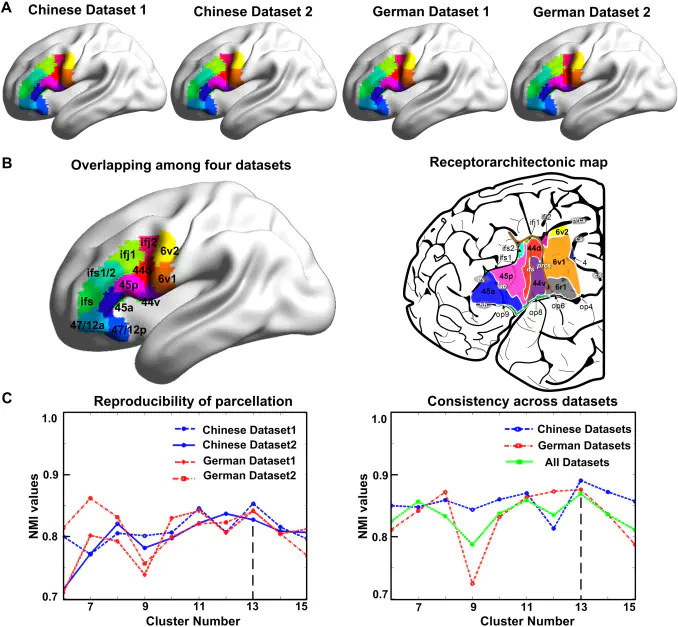Cross-cultural Consistency and Diversity in Intrinsic Functional Organization of Broca’s Region
 Consistent parcellation of Broca region
Consistent parcellation of Broca regionAbstract
As a core language area, Broca’s region was consistently activated in a variety of language studies even across different language systems. Moreover, a high degree of structural and functional heterogeneity in Broca’s region has been reported in many studies. This raised the issue of how the intrinsic organization of Broca’s region effects by different language experiences in light of its subdivisions. To address this question, we used multi-center resting-state fMRI data to explore the cross-cultural consistency and diversity of Broca’s region in terms of its subdivisions, connectivity patterns and modularity organization in Chinese and German speakers. A consistent topological organization of the 13 subdivisions within the extended Broca’s region was revealed on the basis of a new in-vivo parcellation map, which corresponded well to the previously reported receptorarchitectonic map. Based on this parcellation map, consistent functional connectivity patterns and modularity organization of these subdivisions were found. Some cultural difference in the functional connectivity patterns was also found, for instance stronger connectivity in Chinese subjects between area 6v2 and the motor hand area, as well as higher correlations between area 45p and middle frontal gyrus. Our study suggests that a generally invariant organization of Broca’s region, together with certain regulations of different language experiences on functional connectivity, might exists to support language processing in human brain.